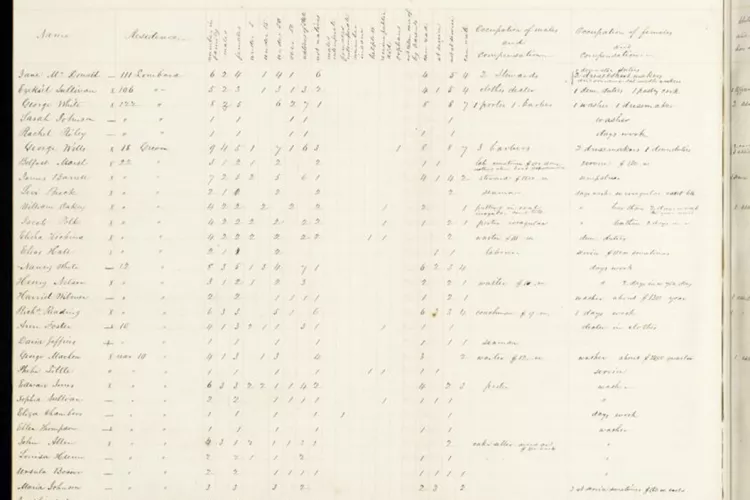Elevating 19th-Century Black Voices in the Friends Historical Library

The manuscript volumes produced through the census contained 43 elements of information for each of more than 4,000 households in Philadelphia.
In 1847, a group of Quakers set out to conduct a census of the African American population of Philadelphia, to document the existence of an “industrious and thriving” portion of the community and identify those in need of support. Now, Swarthmore’s Friends Historical Library (FHL) is working with the original 1847 manuscripts to share the census information, center Black experiences and voices, and create resources that serve Black researchers.
Jordan Landes, curator of the FHL, and Celia Caust-Ellenbogen ’09, archivist, have collaborated on past and present work on the project.
The 1847 data is valuable to researchers because it enables them to “reaggregate the data — to ask new questions and not be bound by the conceptions of social scientists of 160 years past,” says Caust-Ellenbogen. This is essential because while Quaker groups historically supported abolitionism and the civil rights movement, the Quaker population was majority white.
As a result, “a lot of documentation of Black lives [is] from the perspective of white Quakers,” Caust-Ellenbogen says, adding that the current work “flips the script” by making historical information about Black communities accessible and sharing it with a broader audience.
The first attempts to digitize the census information happened 20 years ago. In 2019, the project website was expanded, thanks to the work of Swarthmore College students through the Swarthmore Projects for Educational Exploration & Development (SPEED) program.

The project aims to center the experience of Black Philadelphians like William Still, a famous abolitionist known as a conductor on the Underground Railroad.
Alice Huang ’22, Bilal Soukouna ’22, Helen Huh ’21, and Katie Knox ’22 created a virtual exhibit showcasing the data. Huang joined the SPEED program to expand her computer science skills. Her work was inspired by some of W.E.B. Du Bois’s data visualizations that she saw during an early summer meeting.
“I gained a lot of technical skills [and] learned a lot just from combing through the data,” Huang says.
The 2019 website has since been updated by FHL student worker Yolanda Hu ’22.
New opportunities to work with the census data have arisen this year. In early February, the FHL uploaded scans of the census volumes to its digital library through a project sponsored by the Pennsylvania Abolition Society. This summer, the library will offer several students fellowship positions as Black history and genealogy project assistants.
One likely project for summer fellows will involve the FHL’s collection of manumissions: legal documents freeing a person or persons from slavery by an individual rather than through state or national law. Fellows will update the current cursory listing of this information and create a well-organized and searchable resource, which the FHL hopes to add to a manumissions site built by Tri-College Consortium partner Haverford College.
Students might also transcribe a remaining volume of the 1847 census that was previously overlooked because it contains unique formatting. This final step would bring the initial census project to a conclusion. But the FHL will “be giving the fellows a lot of freedom” to engage with data work and look in new directions, Caust-Ellenbogen says.



